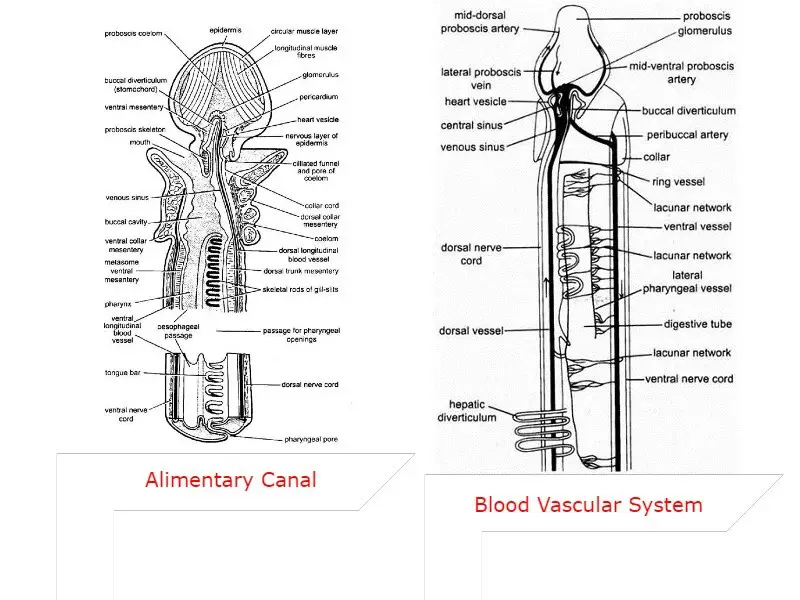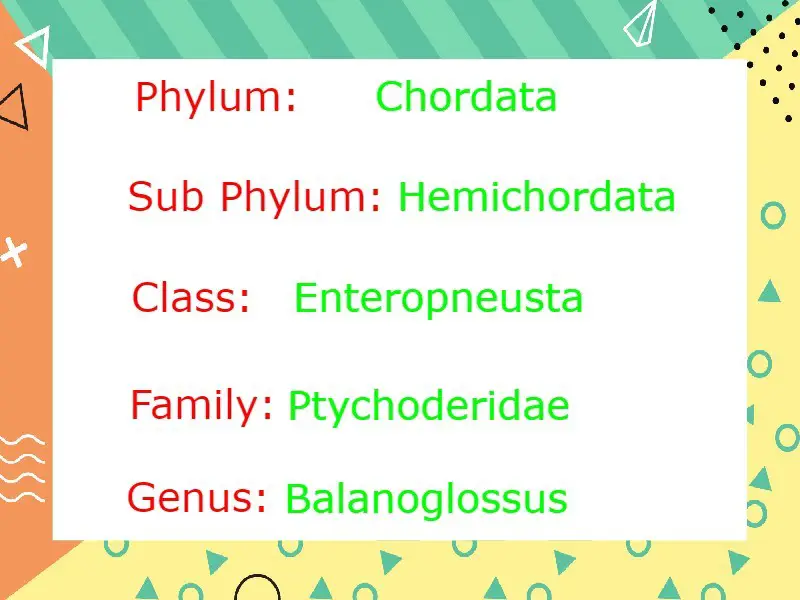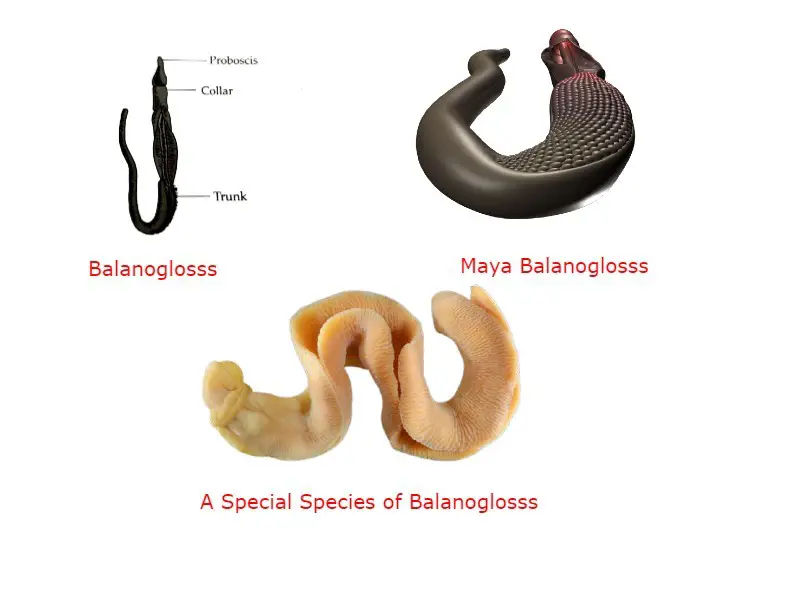In Balanoglossus body is soft and there are no special exoskeletons that can give them protection against external mechanical injuries. Balanoglossus do not have a typical endoskeleton as in other advanced animals in which bony or cartilaginous endoskeleton is present.
In Balanoglossus there are some internal structures that are stiff as the endoskeleton, so they are considered as an endoskeleton in Balanoglossus. Buccal diverticulum, brachial skeleton, proboscis skeleton, and Pygochord are four stiff endoskeletal structure in Balanoglossus that gives mechanical support to their different body parts, we will discuss each type of the four endoskeletal structure in Balanoglossus.
Table of Contents
Buccal Diverticulum:
It is a stiff tubular structure found in the buccal cavity that was considered as notochord or stomochord by most scientists previously but now due to modern research it is clear to us that it is not a true notochord. Histological and embryological studies show that this structure is completely different from notochord present in higher Chordate but it has a great resemblance with the tissues of the buccal cavity.

So we can say that the buccal diverticulum must arise from a part of the buccal cavity and then it is considered as an extension of the buccal cavity. It is an endoskeletal structure formed by a special type of mesodermal tall, slender cells.
It is an outgrowth of the buccal cavity and projects through the proboscis stalk and arises from the roof of the buccal cavity.
Proboscis Skeleton or Nuchal Skeleton:
It is a hard chitinous structure and formed by the growth of the basement membrane of the body wall and looks like a Y-shaped structure. It has a rectangular basal plate with a keel and diverging horn. In the proboscis stalk below the buccal diverticulum, the basal plate is present and the diverging horn extends towards the roof of the buccal cavity, on the ventral side the proboscis skeleton form a keel.
In the proboscis region, Balanoglossus have special tissue, chondroid tissue which has a great similarity with the cartilaginous tissues in vertebrates. The chondroid tissue form a reticulum in which the basal plate of the proboscis skeleton is embedded.
Branchial Skeleton:
In branchiogenital part of the trunk has paired row of gill slits and the gill slits are supported by M shaped endoskeletal structure, they are known as the branchial skeleton. The branchial skeleton is a type of chitinous structure formed by the thickening of the basement membrane and gives a U-like structure to the gill slits and keeps them open.

If we study the structure of each branchial skeleton then we will observe that the middle arm of M shaped branchial skeleton is much thicker than the two lateral arms and the middle arm is bifurcated at the free end. So it indicates that two inverted U-shaped structures join side by side to form the M-shaped branchial skeleton.
Pygochord:
It is an endoskeletal structure made by vacuolated cells and it is present in the trunk region of Balanoglossus. In the trunk region, the posthepatic part has a special thickening which is much stiff and acts as an endoskeletal structure. In the posthepatic region, the space between the body wall and ventral side of the gut has this endoskeletal structure.

This rod-like endoskeleton gives mechanical support to the posthepatic part of the trunk and maybe it has some more functions which are not known to us yet and in the future, it may come to be some other important functions.
Summary: Endoskeleton in Balanoglossus:
Among these four structures, the buccal diverticulum is present in the buccal cavity and is actually the extension of the buccal cavity and it has no relationship with the actual notochord, proboscis skeleton is actually thickening of basement membrane present below the buccal cavity, the branchial skeleton is also thickening of basement membrane give mechanical support to gill slits and keep the opening of gill slits open, Pygochord is the rod-like endoskeleton in the posthepatic region which gives mechanical support to the posthepatic region.
All four structure is made of part of the tissues in the body of Balanoglossus and none of them are made of bone or cartilage as seen in advanced animals but all four structure give mechanical support.
Reference:
Detailed Information on
What is Balanoglossus: A Tongue Worm
Hi Everyone!!! Welcome to Imaluop. Imaluop always try to learn some new and he want to share to other people. Here we will try to learn various topics on Science, specially on Biological Sciences.
